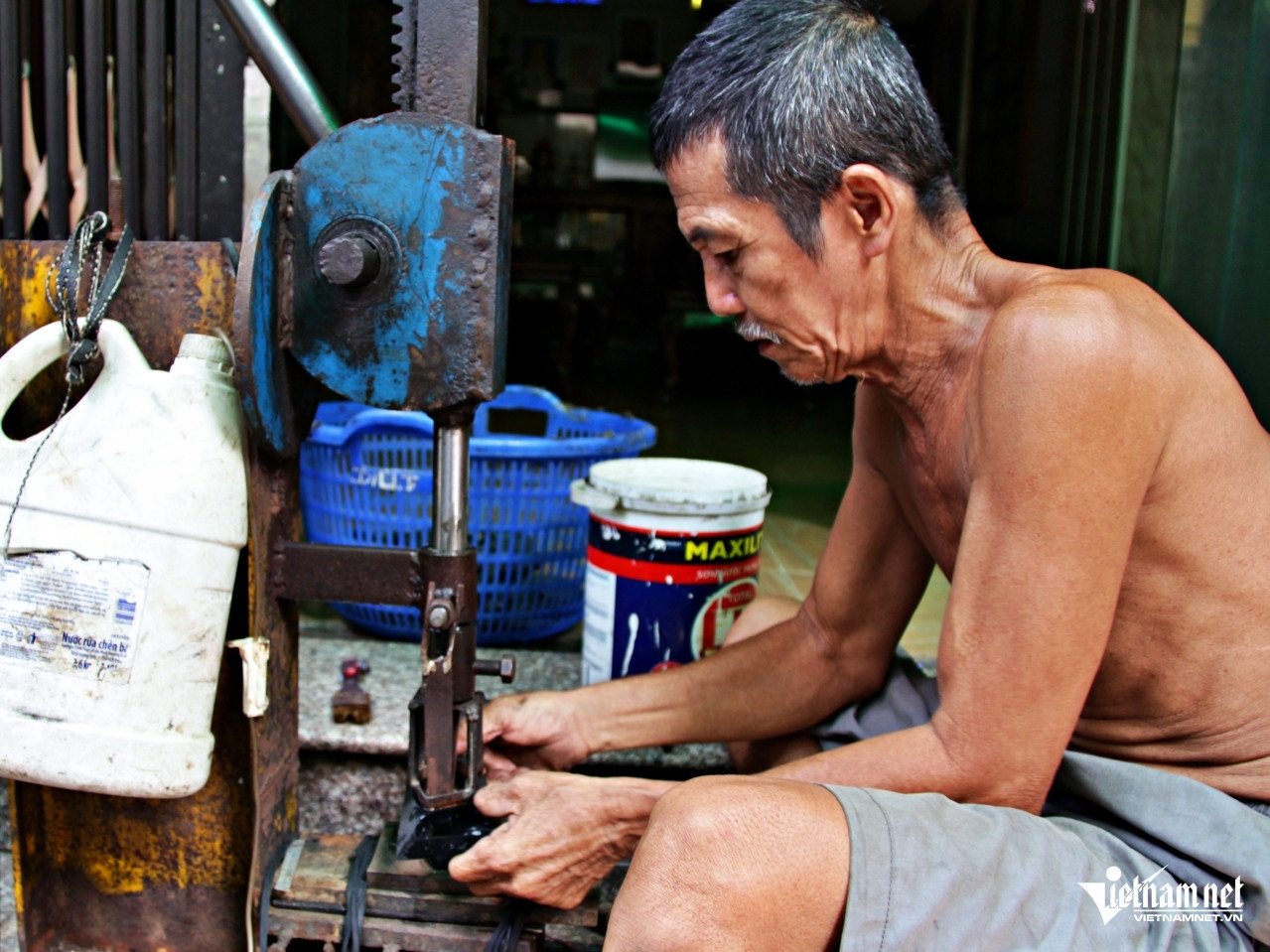
On both sides of a 3-meter wide alley on Lac Long Quan Street in District 11, HCM City, old car tires are piled up. Among these are countless pieces of rubber of various sizes stacked up against a wall.
The piles are the raw products of the cutters of the old car-tire recycling village. The workers say the village was established after Reunification Day on April 30, 1975.
In the past, the work prospered and was the livelihood for most people on the alley. Tran Van Tien, 62, said in the first years after Reunification Day, people’s lives were difficult and they tried every possible way to earn a living.
So one man decided to collect old tires and cut them into pieces to make rubber sandals for sale. Later, rubber sandals were no longer favored because they were heavy and blackened feet, so workers shifted to making pig troughs, bags, tire pads for vehicles, and bike brake pads.
As workers could earn a living, many other locals jumped on the bandwagon. The craft village of processing rubber items from old tires gradually took shape. The job fed hundreds of local families, and brought them stable incomes. Some people even got rich with the job.
As all households in the alley took this job and created a craft village, it was called the car-tire cutting village, and the workers who used steel knives were called cutters.
The cutters’ work was hard. After collecting old tires, they used sharp knives to cut and split the tires into pieces of various sizes. Depending on the purpose, workers would split the tires into pieces with different thicknesses and widths. Finally, they used machines they had modified to create the products.
According to Tien, the work was difficult because, when cutting and splitting tires, workers had to use their hands to flip and rotate tires weighing 40-100 kilograms.
As the tires were hard and tough, workers had to use very sharp knives. When cutting, they used a lot of strength, and easily got tired. Normally, it took the worker half a day to cut a large tire.
The workers had sharp pointed tools. Accidents would occur when workers lost concentration, even for a minute. Though the workers were always very careful, all of them had scars on their bodies.
Most cutters in the car tire recycling village worked manually just as they were once taught by their predecessors. They created several kinds of machines to help ease the workload.
In previous years, with the machines, one cutter could earn VND400,000-500,000 a day from his work. However, the income has dropped recently as demand for tire-made products is now low.
The craft village has shrunk in size, with only 5-6 households still pursuing the work, while others have shifted to another business.
Explaining this, a local man said the work is hard, so not everyone can do it. Workers have to work in poor conditions with rubber dust, and can easily contract respiratory diseases.
Doan Van Thanh, 63, said that when splitting old tires, workers used a lot of strength and had to sit all day long. Therefore, most workers had problems with their musculoskeletal system.
As the products made of old tires are no longer in high demand, they either do not sell or sell at low prices. As incomes fell, many workers gave up their job.
“Young people, who now have more study and job opportunities, don’t want to run the workshops of the previous generations because the income is modest,” he explained. “Only old workers like us still live on the job."
The workshops in the village that can still thrive have large capital, are equipped with many machines, and can make diverse products.
“There are now only one or two such workshops,” he said.
Ha Nguyen